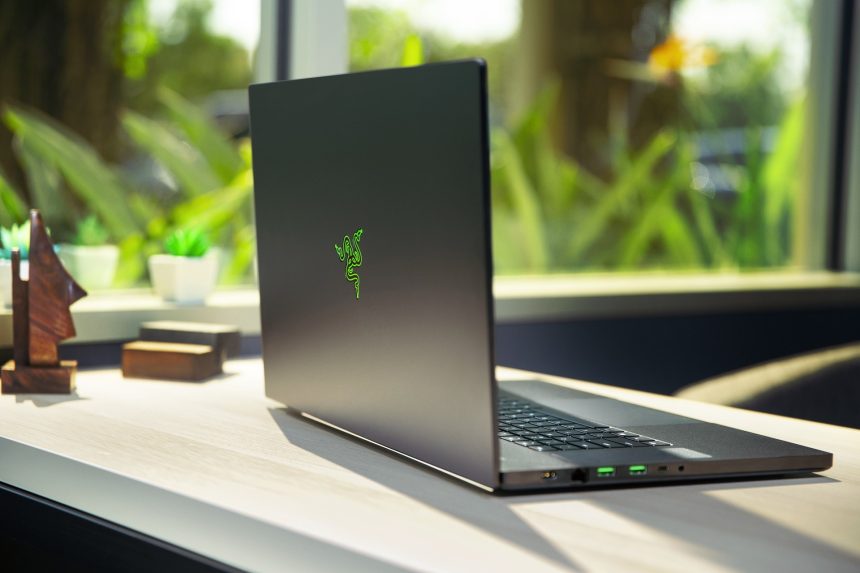Laptops work well and are easy to carry, but they aren’t as adaptable as desktop computers. It’s hard to change your mind about a laptop once you’ve picked one.
You could spend a lot of money on a well-known laptop, but what if it doesn’t do what you need? What if the screen or keyboard isn’t good for your hands or doesn’t have the right ports? Changing parts like you can on a PC unit is impossible. Considering how you’ll use your laptop before buying one is important.
Setting Your Budget
Your budget is the first thing you should consider before shopping for a laptop. Laptops can be expensive, but you should consider them investments. So, figuring out how much you can comfortably spend on this buy is important. This will help you narrow down your options.
Cheap laptops usually have simple Windows systems and slower processors that are fine for simple jobs.
If you want a more balanced and powerful laptop, get one with at least an Intel Core i3–i5 or AMD A8/Ryzen CPU, 4GB–8GB of RAM, and a 256GB SSD.
High-performance computers with faster processors and better graphics cards will cost you more, but they will be the best in quality and performance. These laptops are great for demanding gaming, graphic design, and programming jobs.
Choosing Your Operating System (OS)
You generally encounter three widespread options in operating systems: Chrome OS, macOS, and Windows. As per the Statista Research Department data, Microsoft’s Windows remains the most widely utilized computer operating system worldwide, capturing 69.61 percent of the desktop, tablet, and console OS market as of December 2021.
Windows 11 (or Windows 10)
Windows 11 is the most versatile choice among operating systems, compatible with a broader range of laptop models compared to Chrome OS or macOS. The spectrum of Windows notebooks spans from affordable options under $150 to premium models reaching several thousand dollars, offering an extensive array of features, from touch screens to fingerprint readers and even dual graphics chips.
Windows 11, Microsoft’s flagship operating system, represents a significant advancement over Windows 10, showcasing a revamped interface, the new Microsoft Store, and practical features like Snap View. Since its debut in October 2021, Windows 11 has continued to evolve, introducing many enhancements, including features such as Focus Sessions and a Do Not Disturb mode.
The 22H2 update has brought substantial improvements in performance and battery optimization. Windows 11 laptops are an excellent choice for students, researchers, and business professionals, and they remain the go-to option for gaming enthusiasts seeking a powerful computing experience.
Apple macOS
All MacBooks are powered by Apple’s latest desktop operating system, macOS Ventura. This operating system delivers functionality similar to Windows 11 but exhibits a distinctive interface approach. Instead of Microsoft’s Start menu and taskbar, macOS Ventura features an apps dock at the bottom of the screen. For virtual assistance, Mac users rely on Siri instead of Cortana.
Additionally, they enjoy the convenience of performing transactions with Apple Pay, managing calls and texts from their phones, and unlocking their laptops using an Apple Watch. It’s worth noting that macOS is not optimized for touch interaction, primarily because no MacBook is equipped with a touchscreen.
Although Apple introduced iPad apps to its laptops, starting with macOS Big Sur (allowing iPad and iPadOS apps to run natively on M1 and M2 Macs), navigation remains reliant on a touchpad or mouse. Ventura also introduced Apple’s Stage Manager to facilitate multitasking, a valuable feature, although it may take some time to become fully accustomed to it.
Chrome OS
Chrome OS, frequently found on budget-friendly Chromebooks such as the Samsung Chromebook 3, offers a user-friendly and secure computing experience. While it is similar to Windows, featuring an application menu, desktop, and window management, its primary focus remains the Chrome browser.
Although newer Chromebooks, like the Lenovo IdeaPad Duet 5 Chromebook, support Android apps, they’re not always perfectly tailored to the laptop form. Chromebooks excel in web browsing, email, social networking, and online communication.
They boast portability, extended battery life, and cost-effectiveness, making them a preferred choice for schools, parents, and businesses seeking protection from malware. In educational contexts, they deliver a laptop-like experience and greater versatility than most tablets.
Black Friday and Cyber Monday Laptop Bargains
Black Friday and Cyber Monday present golden opportunities for laptop purchases, extending beyond the allure of doorbuster deals. Typically, new laptop hardware hits the market at the year’s commencement or around October, contingent on the manufacturer.
Consequently, laptops from the previous generation or those on the verge of becoming the prior generation post-CES (Consumer Electronics Show) tend to undergo substantial price reductions. Retailers like Amazon and Best Buy aim to clear inventory for forthcoming products. While you may not acquire the latest cutting-edge laptop, saving 20-30% off the original price is an enticing prospect.
Combine this with the extensive best black friday deals and Cyber Monday sales and secure an exceptionally affordable laptop.
Choosing Between 2-in-1 and Traditional Laptops
One pivotal decision when selecting a PC laptop is whether to opt for a 2-in-1 laptop or stick with the conventional clamshell design. 2-in-1 laptops are versatile hybrids that seamlessly transition between various modes, including the traditional clamshell, tablet mode, and positions in between, like tent or stand modes.
Two primary styles are detachable with removable screens and convertible laptops with 360-degree hinges for mode flexibility. Convertibles prioritize their role as laptops, excelling in traditional computing tasks.
On the other hand, detachables provide a superior tablet experience. However, if tablet functionality isn’t a priority, a traditional clamshell laptop typically offers better overall performance for your investment.
Evaluating Keyboard and Touchpad Quality
Even with impressive technical specifications, a laptop’s usability hinges on its ergonomics. If you anticipate extensive computer use, pay attention to the keyboard’s tactile feedback, key travel (typically 1 to 2mm, the distance a key travels when pressed), and adequate key spacing.
For Windows laptops, ensure the presence of Precision touchpad drivers for an accurate, responsive touchpad without erratic cursor movement, ensuring seamless multitouch gestures like pinch-to-zoom. When considering a business laptop, explore options with a pointing stick (known as a nub) between the G and H keys.
Have the Best Laptop for Your Needs
Knowing these tips when buying a laptop is essential to ensure you make an informed and cost-effective choice. They help you consider factors like budget, operating systems, and ergonomics, ensuring you acquire a laptop that aligns with your needs and preferences enhancing your overall computing experience.














